A sense of urgency overtook me today and I was able to get a couple of important photographs made. I'm exhausted right now, but elated. While I call everything an experiment, it's not exactly true. For now, however, I'm calling the work experimental.
The "train tracks" image below is something I've been meaning to try for a while. Most all of the tracks here were used, at least in some part, to transport Jews and other undesirables to either bigger train stations or directly to the concentration camps. My friend, Caron, mentioned that I should look at making some images like this - I couldn't agree more.
The feeling I get when I look at this empty, quiet image is one of anxiety. I'm waiting for a train to rip through this space headed east (the direction of this image) with cars full of people going to their death. Although, it doesn't look like it, I was very close to the tracks. It made me a little bit nervous. I shot this with my new (old) CC Harrison portrait lens - wide open - what a neo-pictorialist, huh? I was lucky to find a spot where I had access to the tracks (and schlep all of my Scheise to it). Sometimes, it's difficult doing these kinds of things. I was thinking about how I would probably be arrested in the United States for doing this... you know the whole terrorist scare thing. No one was around when I made the images. It was out of the way and "in between" towns.
 "Train Tracks Headed East - Bahnhof Ahead" - 29 March 2008 - 1305 - 10x8 Black Glass Ambrotype (destroyed) - Southwestern Germany (quiet countryside).
"Train Tracks Headed East - Bahnhof Ahead" - 29 March 2008 - 1305 - 10x8 Black Glass Ambrotype (destroyed) - Southwestern Germany (quiet countryside).
I'm going to keep making images of memorials, tracks, and portraits (and whatever else strikes me). I'm also going to explore making images of smokestacks. All of these symbols are very powerful to me. I have no idea how all of this is translating, or will translate, but I'll keep making images, thinking out loud, writing my thoughts and ideas down and hopefully, someday put it all together.











 This is probably my favorite image I shot there. This beautiful red rose, covered in frost and dying, lying on a box of ashes of some of the victims of Dachau. The wall says, "Never Again" in five different languages. That is the message I got - to keep these memories alive. The stones are from Jewish people that have visited and placed a stone on the box of ashes as a symbol of erecting a tombstone for the dead.
This is probably my favorite image I shot there. This beautiful red rose, covered in frost and dying, lying on a box of ashes of some of the victims of Dachau. The wall says, "Never Again" in five different languages. That is the message I got - to keep these memories alive. The stones are from Jewish people that have visited and placed a stone on the box of ashes as a symbol of erecting a tombstone for the dead.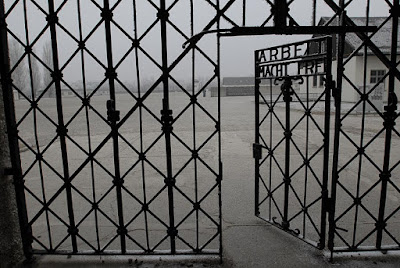 The infamous gate - "Arbeit Macht Frei" - I will never think about that phrase the same way again.
The infamous gate - "Arbeit Macht Frei" - I will never think about that phrase the same way again.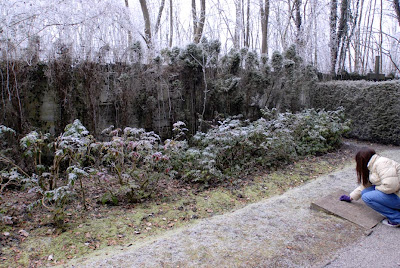
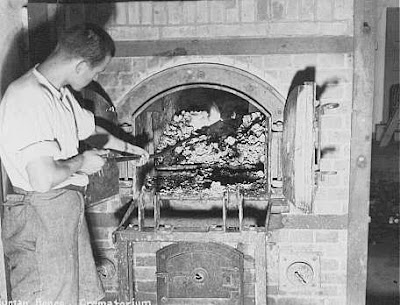
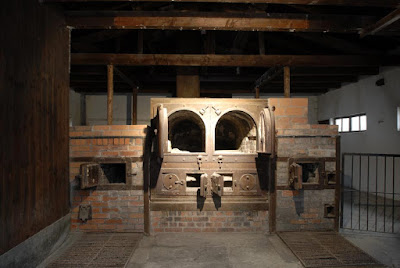

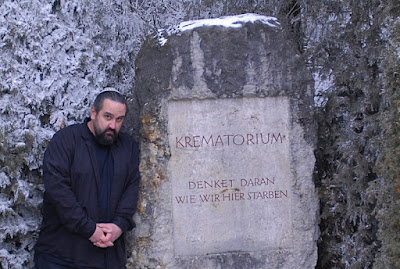
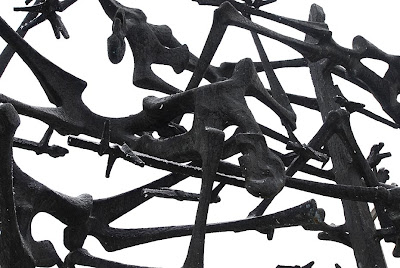
 This is the ONLY color in the camp. It's a bas relief that shows the different "badges" worn by the camp's prisoners. Jews, A-socials (Gypsies), Homosexuals, Jehovah Witnesses, and Political and Religious prisoners all had different symbols and color combinations of symbols in order to quickly identify their "crimes". The piece is three links of chain connected by bars with the badges on/around each chain.
This is the ONLY color in the camp. It's a bas relief that shows the different "badges" worn by the camp's prisoners. Jews, A-socials (Gypsies), Homosexuals, Jehovah Witnesses, and Political and Religious prisoners all had different symbols and color combinations of symbols in order to quickly identify their "crimes". The piece is three links of chain connected by bars with the badges on/around each chain.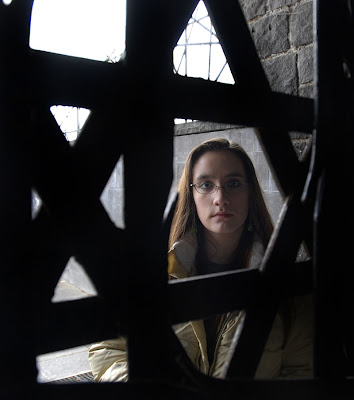
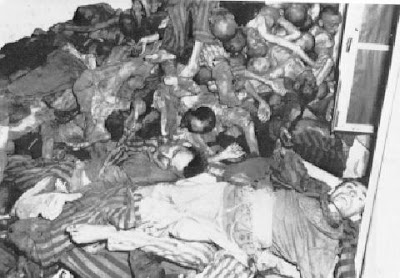
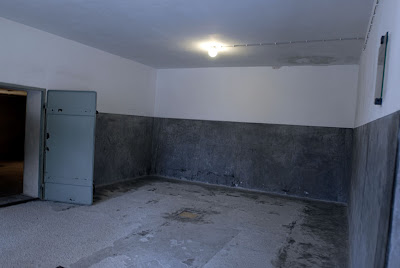 This is the room where the (above) victims were piled up. It was cold and eerie. The whole thing was surreal.
This is the room where the (above) victims were piled up. It was cold and eerie. The whole thing was surreal.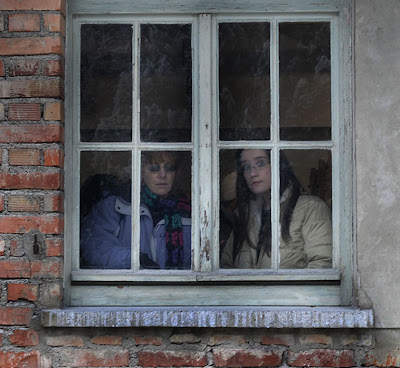
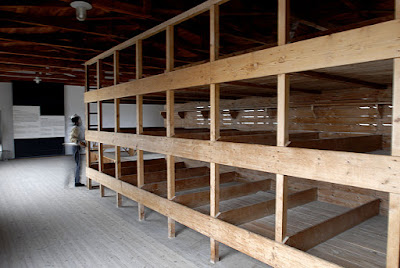 The barracks - rebuilt in 1964. It was amazing how strict the SS was on the cleanliness and order of the barracks - just another testament to the sickness of it all.
The barracks - rebuilt in 1964. It was amazing how strict the SS was on the cleanliness and order of the barracks - just another testament to the sickness of it all.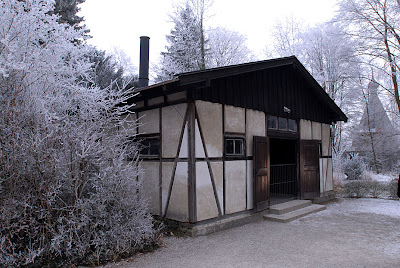

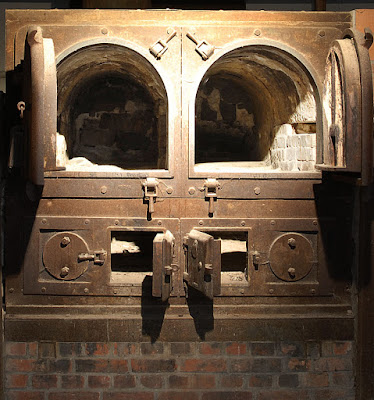
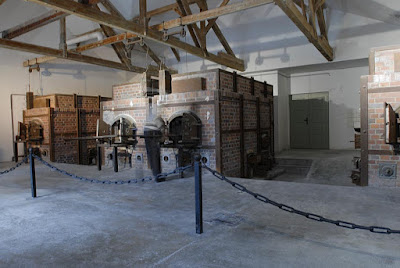

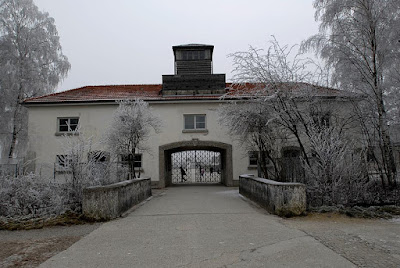

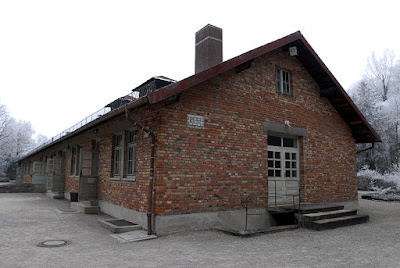
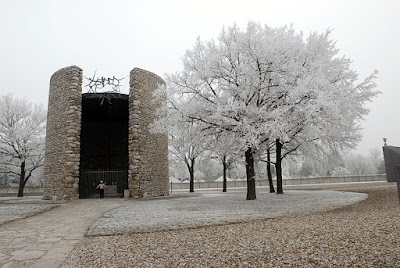 2/3 of all of the prisoners were non-Jewish, political prisoners with Polish Catholics in the majority. 1034 Catholic Priests died at Dachau. This is a memorial to them.
2/3 of all of the prisoners were non-Jewish, political prisoners with Polish Catholics in the majority. 1034 Catholic Priests died at Dachau. This is a memorial to them.


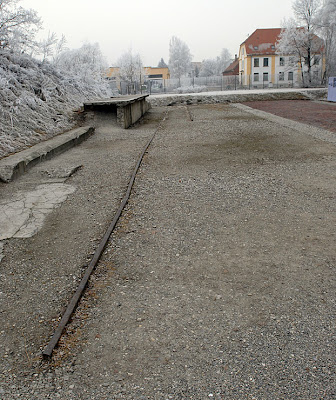 This is some of the train track just outside of the main gate.
This is some of the train track just outside of the main gate.